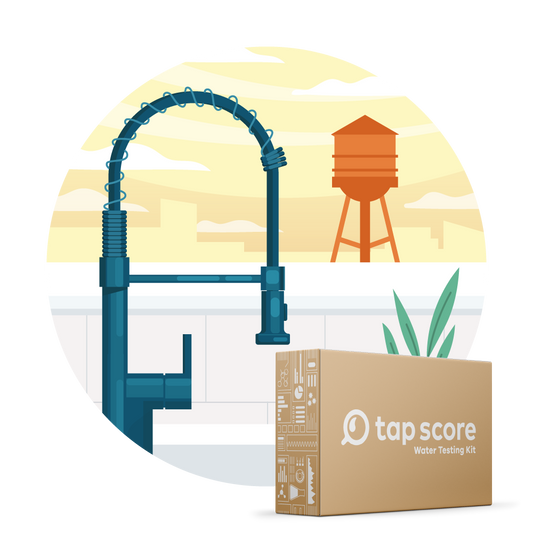
What is Turnaround Time (TAT)?
Our blog is written by real experts— not AI. Each guide is carefully reviewed and updated based on the latest research. Plus, with no affiliate links, you can count on unbiased insights you can trust.
In the world of laboratory testing, a phrase you often hear is “turnaround time” or “TAT”. In this article, we explain what “turnaround time” is, what factors can impact turnaround time, and why it can vary from test to test.
What Does TAT Stand For?
Turnaround time (also called TAT) in regards to laboratory testing is the time period from when the sample(s) are received and accepted at the laboratory to the time when reports are finalized, verified, and released.
During this period, a handful of things take place, including: the client chain of custody (COC) is compared to the sample received, hold times (if applicable) are verified, the sample is then logged in the laboratory information management system (LIMS), prepared per the requested analytical method (filtered, acid digested, preserved, etc.), loaded onto the instrument or microscopically analyzed. As the samples are being analyzed, each sample also must pass a rigorous quality assurance/quality control (QA/QC) process to verify accuracy of all results before it is finalized.
Why Is Turnaround Time Important?
Turnaround time is a critical period to ensure quality of services and accurate reporting.
Whether you are in need of results to complete the sale of a home, refinancing a mortgage, or are simply looking to mind at ease for various concerns–getting results to you as quickly as possible is always a top priority for our team. However, so is accuracy and subsequently, we provide results once they have completed all required steps (including the QA/QC process) that are included in the turnaround time period.
While some analyses are able to be completed very quickly (sometimes in just 2-3 days), others typically require more time (~12 - 14 days). A variety of factors impact this standard turnaround time. For each testing package, we are able to estimate a standard expected turnaround and completion date–and while oftentimes Tap Score and SimpleLab testing and reporting is completed sooner than expected, sometimes there are extenuating circumstances that may require extra time before reports are ready.
What Factors Affect Turnaround Time?
Depending on the analysis being run, different types of tests have different standard turnaround times. For example, the number and type (metals, bacteria, radiologicals, etc) of analytes being tested can impact that TAT, as well as the quality (clarity or turbidity, etc) of the sample.
Not only does TAT vary from test type to test type, but from sample to sample. For example, if two samples being test for the same thing, but one same is very turbid (ie. murky, cloudy)–the more turbid sample may require extra time to prepare before it can be loaded onto the instrument or microscopically analyzed. Subsequently, it may result in a longer turnaround time.
Below are a few common factors that can impact turnaround time:
What’s being tested:
More common analyses (such as lead and copper, for example–which are run extremely frequently in most labs) are typically faster to complete, as compared to something more specialized (like PFAS or pharmaceuticals). A few reasons contribute to this. A main reason is that different analytes are measured down to different sensitivities. Typically, the more sensitive the lead and copper are typically measured down in the part per billion (PPB) range, why PFAS are typically measured down much, much lower–to the part per trillion (PPT) range. As a result, the lower the limit of detection the lab is trying to achieve, the higher the chance they might need to do a re-preparation of the samples and additional verification of results within the framework of tighter QC acceptance criteria.
Another reason that common analyses are faster to analyze than a more specialized testing requests is that more labs are set up to run these standard analytes. With instruments costing in the hundreds of thousands of dollars, not all laboratories are configured to run all types of analyses. Subsequently, this may mean there are more limited testing options available for more specialized analysis.
Quality of the sample:
As mentioned above the quality (ie. the clarity, turbidity etc) of the sample can also impact the speed at which it can be prepared, tested, and QC’ed. Samples that are extremely murky must be prepped differently than clean samples. Because the instruments are calibrated to drinking water standards, ‘dirty’ samples can damage the instruments if they are not diluted or prepared accordingly before being loaded onto the instruments. It can also compromise all other samples that are being run in that batch.
A damaged instrument can have devastating impacts for the overall laboratory operations–as it not only may require a technician to service the instrument, it may also require new parts, and re-calibration–all of which may halt operations for days or even weeks. As a result, it is critical that the laboratory technicians take the time to ensure that the samples are prepared properly.
Instrument issues:
Not only are there occasional instances of damage or calibration issues for various lab instruments, they also undergo routine maintenance to ensure that they are functioning properly. Proper instrument calibration reduces bias in an instrument’s reading, and ensures accurate data. This process of testing and adjusting calibration is required to deliver consistent, high quality service and prolong the life of these very expensive analytical instruments. However, it may mean that turnaround times may be slightly delayed during this period.
Quality control (QC):
As mentioned above, the quality control (QC) process is the last critical step that must occur before results can be verified and released as a final report. The QC process detects, evaluates, and corrects any errors due to instrumentation issues, environmental conditions, or technician performance–all before the results are reported.[1] There are an extensive number of measures in place that must be checked as part of this process.[2]. These include (but are not limited to):
-
Method Blank (MB): A method blank is a sample that is contaminant-free (typically using laboratory grade deionized water) and is prepared and analyzed following the same process as the other samples that are being tested. This means that any preservatives or reagents used in sample preparation are added to the method blanks as well. Method blanks are used to determine whether the sample preparation process and any chemicals used therein introduce contaminants to the samples. If the sample results for any method blanks are anything other than non-detect, it could mean that contamination was introduced via the sample preparation process.
-
Laboratory Duplicate (LD): A laboratory duplicate is created by splitting a sample into two sub-samples and analyzing them separately on the same instrument and in the same analytical batch. The results for laboratory duplicates are compared in order to evaluate the precision of the analysis measurements.
-
Laboratory Control Sample (LCS): A laboratory control sample is composed of a contaminant-free matrix (typically pure deionized water, like for method blanks) to which known concentrations of the target analytes have been added prior to sample preparation and analysis. The recoveries of the target analytes in the LCS are used to determine whether the method is working properly and if the lab is capable of making unbiased measurements. Labs set acceptance criteria for the different analytes in the LCS using statistical methods on historical data.
-
Matrix Spikes (MS): Matrix spikes are similar to LCS’s in that they are samples to which known concentrations of target analytes have been added prior to sample preparation and analysis. The difference between a matrix spike and an LCS is that the analytes are spiked into the actual sample matrix for the matrix spike (e.g., the actual tap water being analyzed), whereas an LCS involves spikes in a contaminant-free medium (e.g., deionized water). Matrix spikes are analyzed to confirm method performance by measuring the effects of interferences caused by the specific sample matrix.
-
Calibration Blank: A calibration blank is an aliquot of a contaminant-free matrix, such as deionized water, that can be used to calibrate the analytical instrument. The calibration blank is distinct from the method blank because it is not subject to the sample preparation steps used to process actual samples like the method blank.
-
Calibration Standards (CS): Calibration standards are made by diluting a standard solution containing known amounts of the target analytes, resulting in a sequence of samples with different, known concentrations of the analytes to be measured. The calibration standards (including the blank) are used solely to calibrate the analytical instrument, they are not used to confirm method performance.
The additional QC samples described above are just a subset of the extensive QC protocols a lab will run in order to verify results. All QC protocols are critical to ensure high quality, accurate data. If any QC checks fail, it may mean that the sample needs to be re-run, re-processed or re-collected. Tap Score (and SimpleLab) always strive to provide you with your results ASAP while maintaining best practices so that you can trust that your results are of the utmost accuracy.
Can Turnaround Time Be Expedited?
In some cases, turnaround time can be expedited (often for an additional fee–as it costs to ‘cut the line’, so-to-speak). However, there are some tests that cannot be expedited beyond a certain point. If you think you may require a rushed turnaround time, you must contact our team before you place an order to confirm that we can accommodate. Samples cannot typically be expedited once they are already at the lab/on the instruments. You can send out team a message any time at hello@gosimplelab.com and we will be standing by to help out and do our best to meet your TAT needs!






